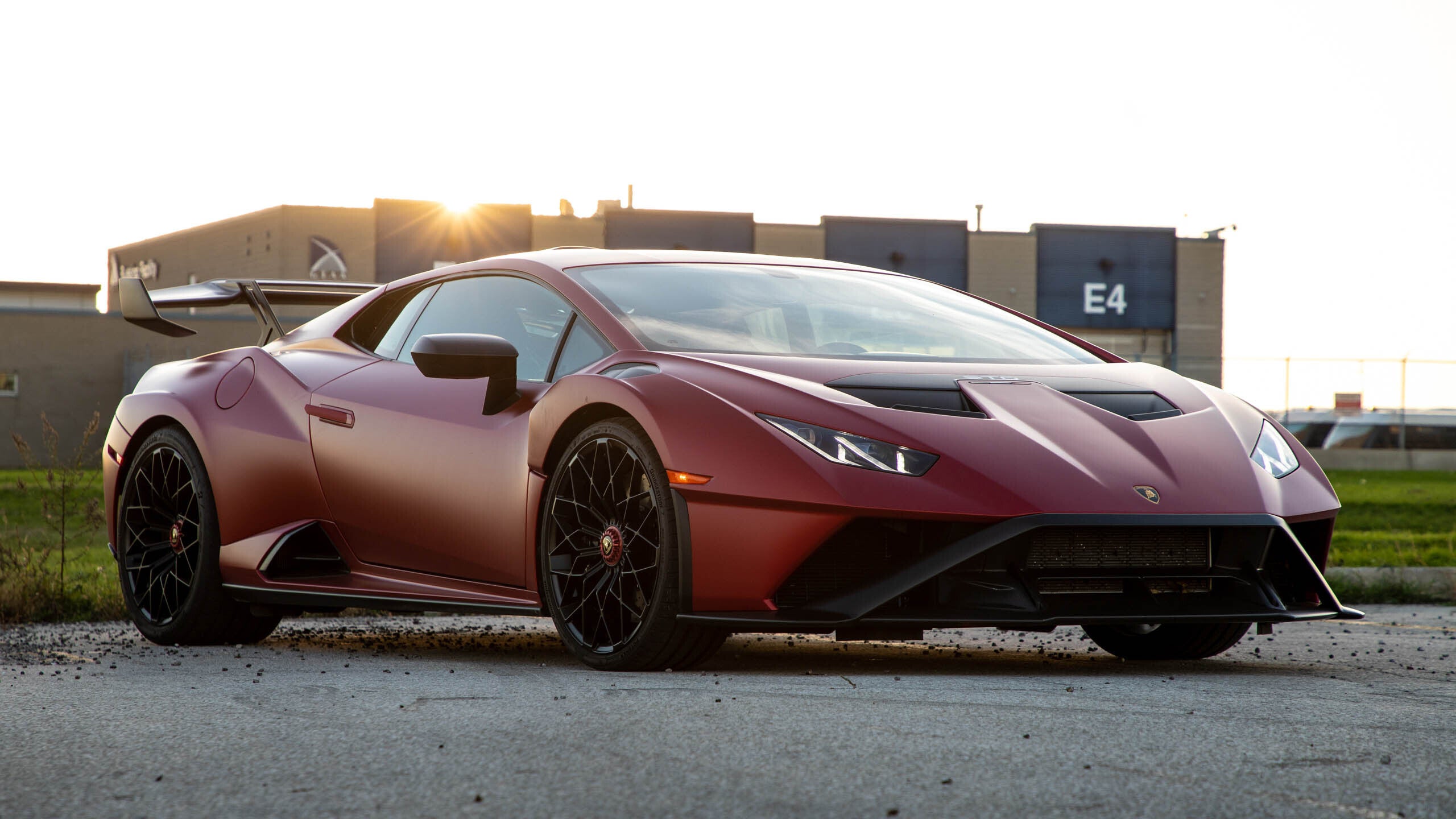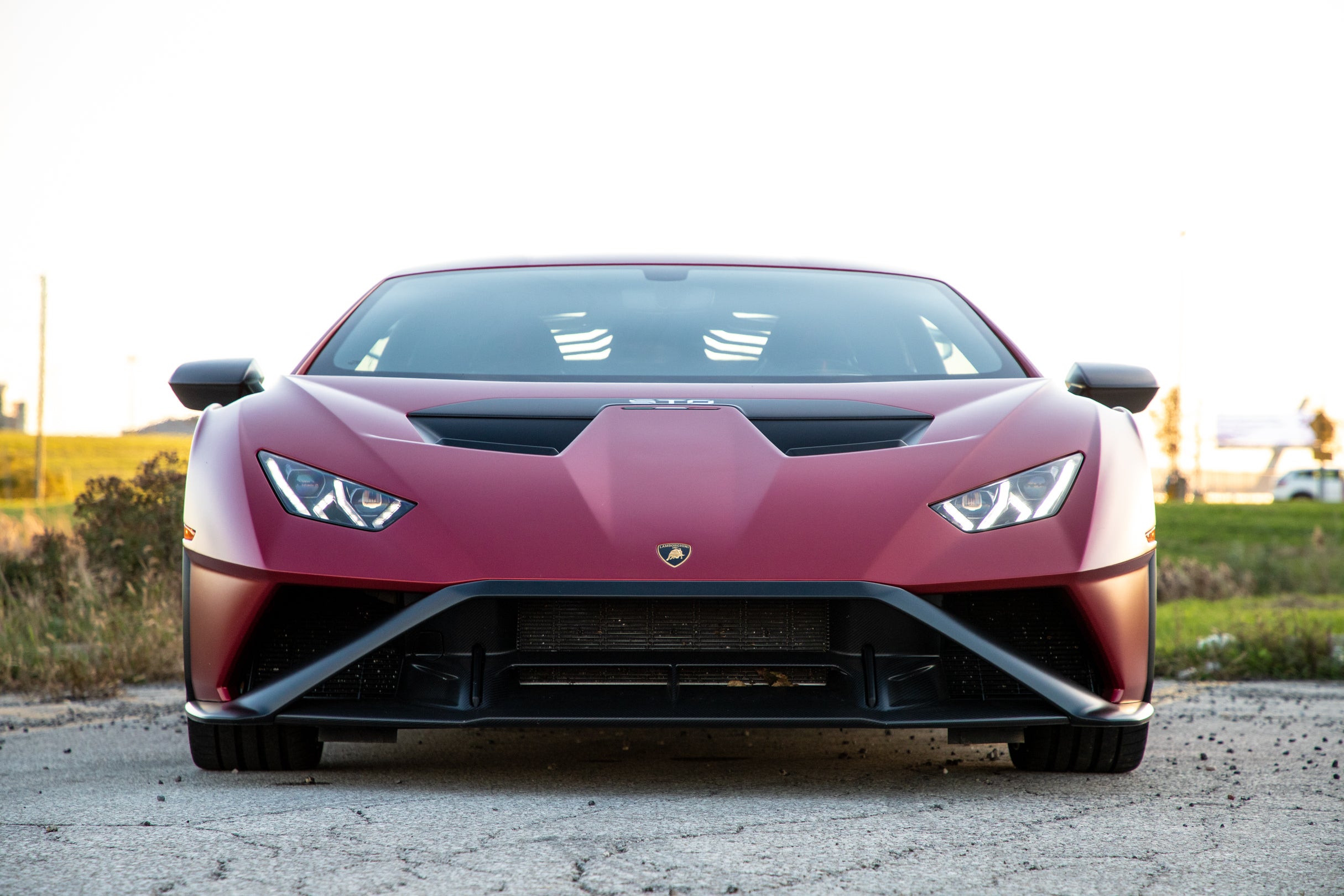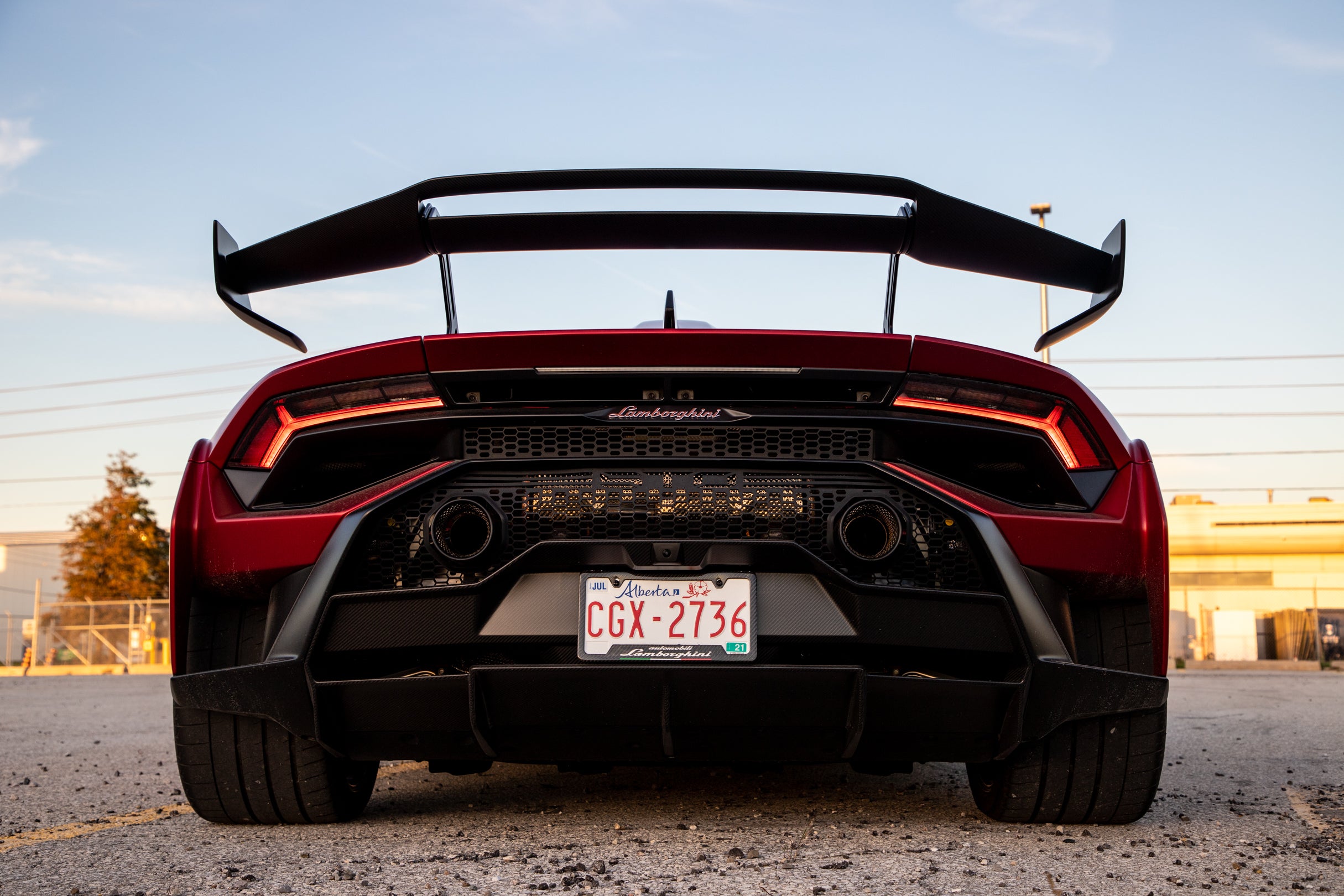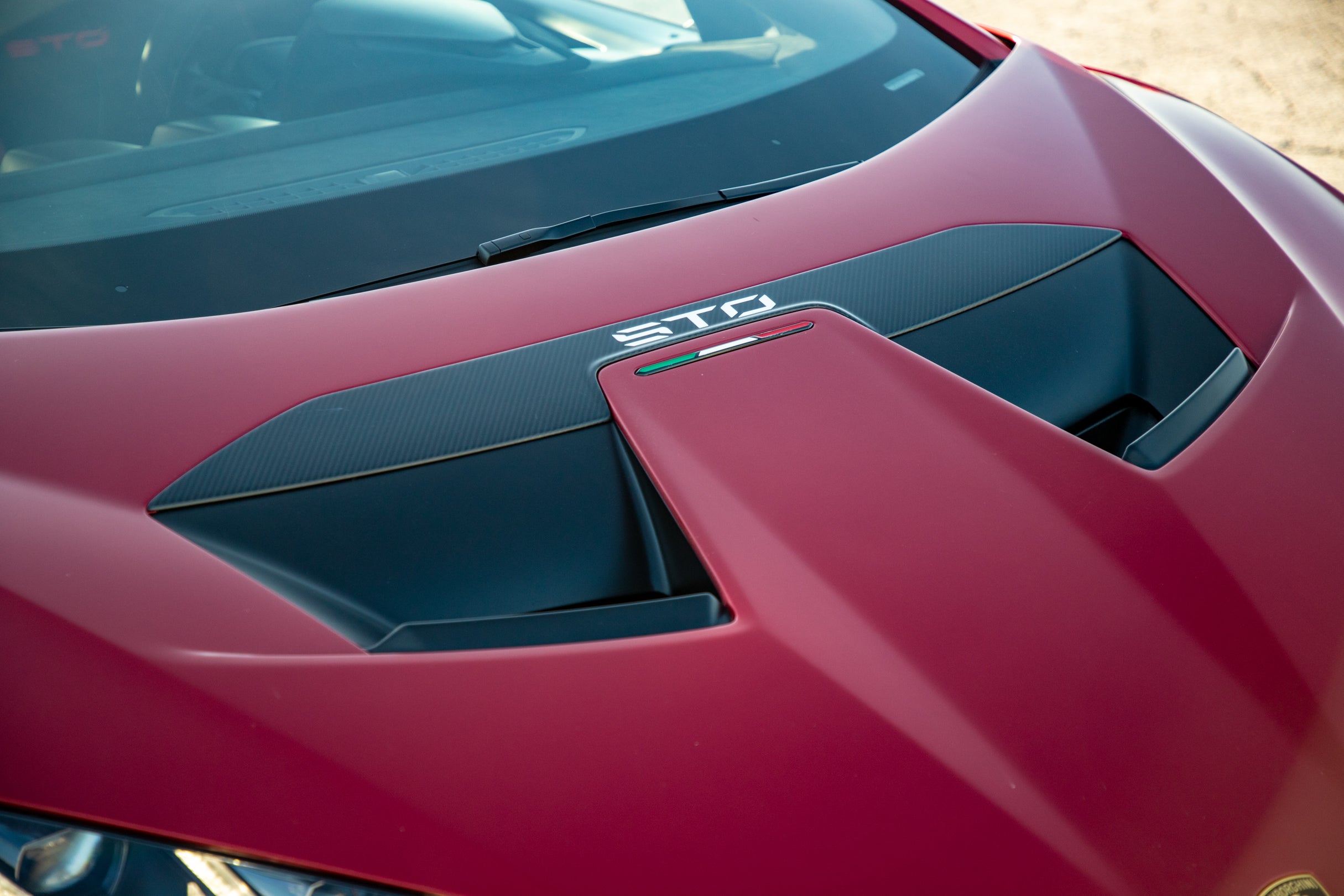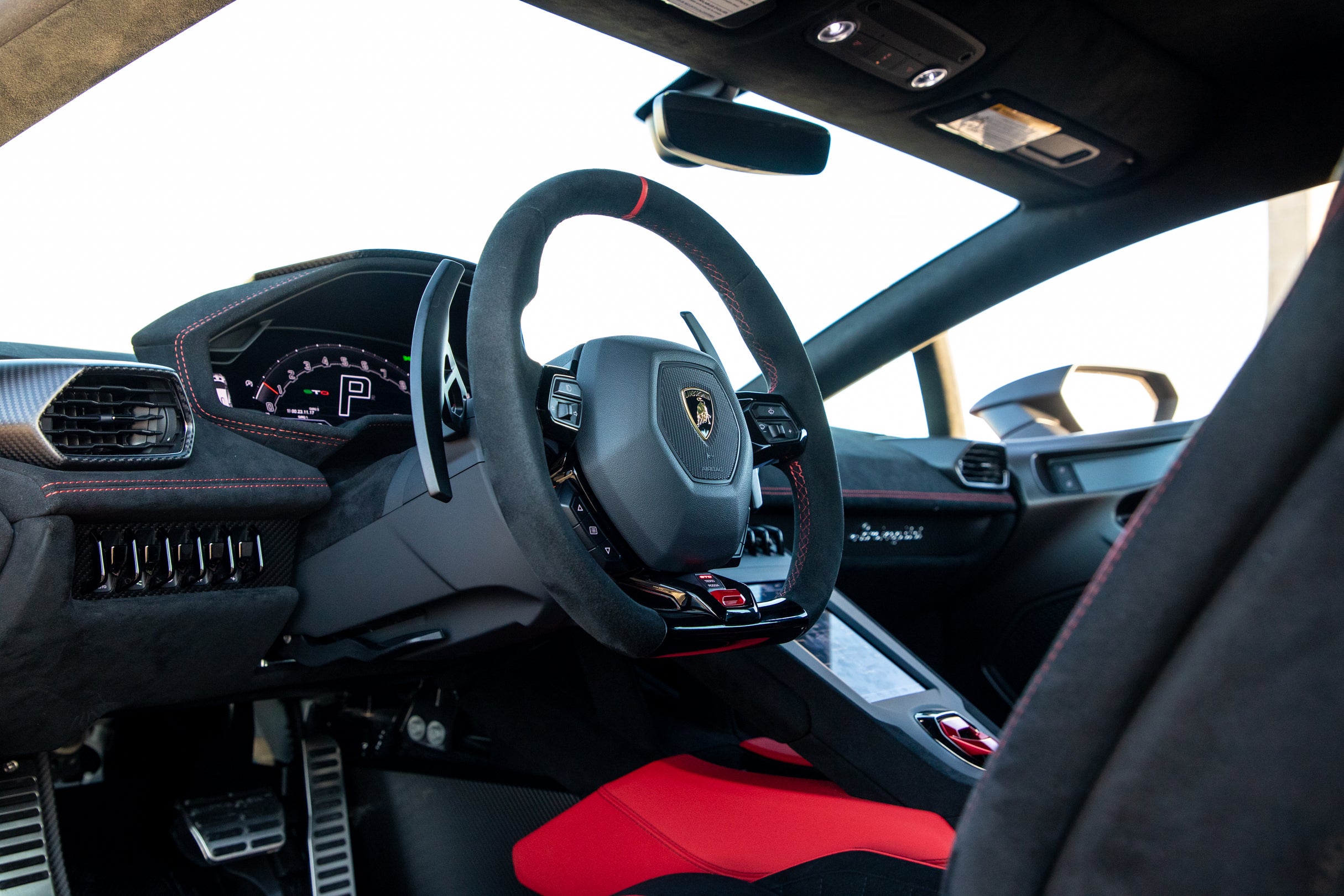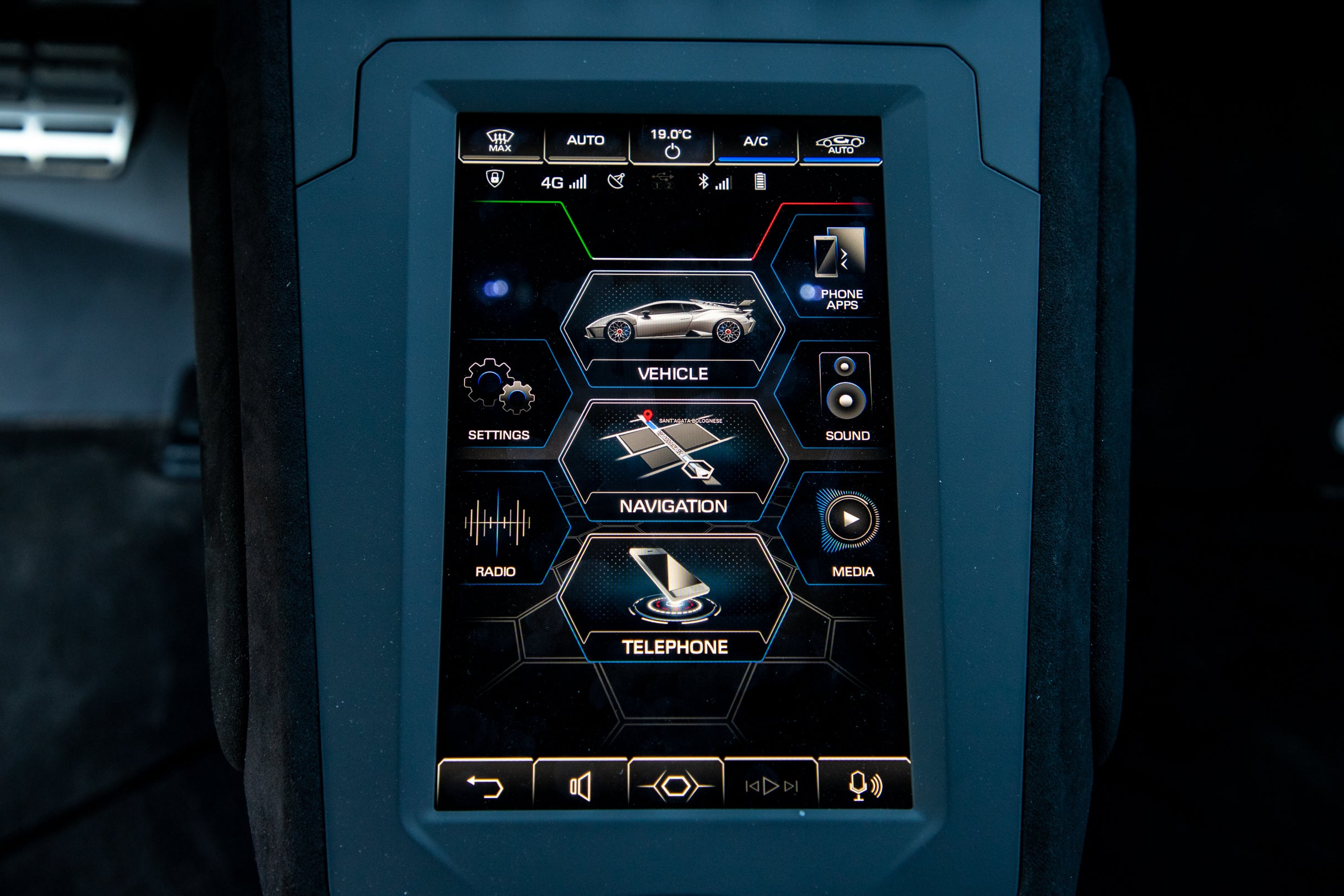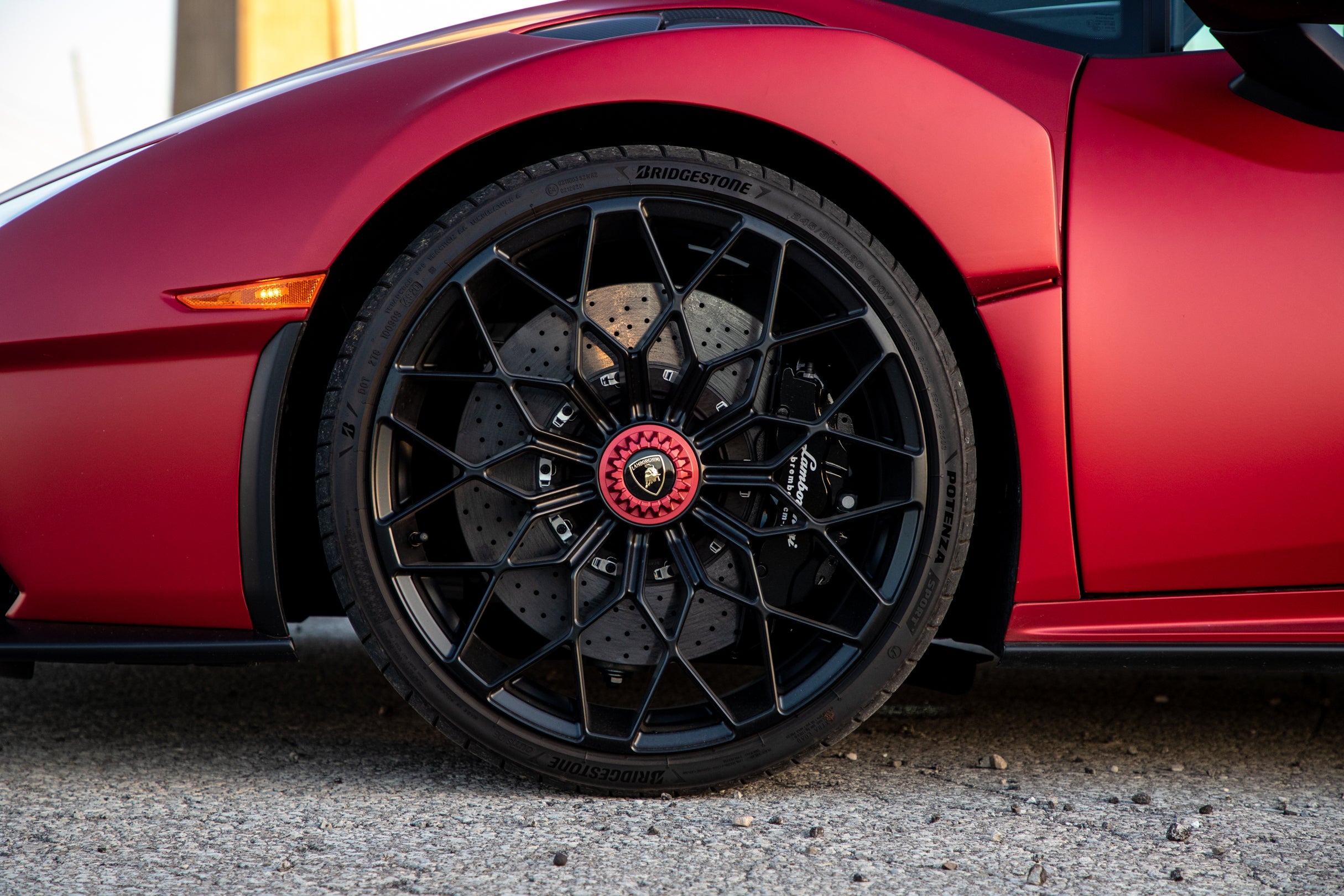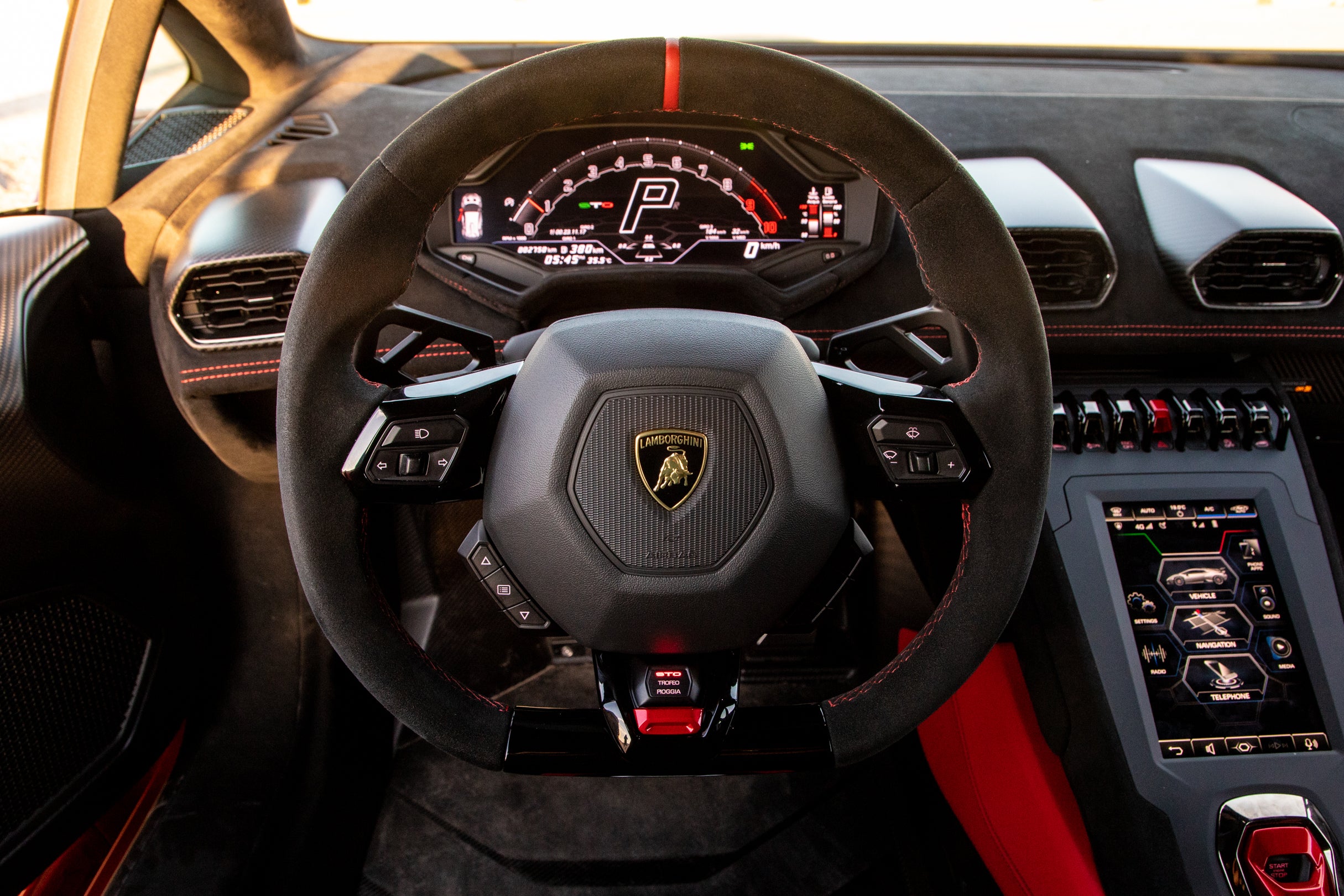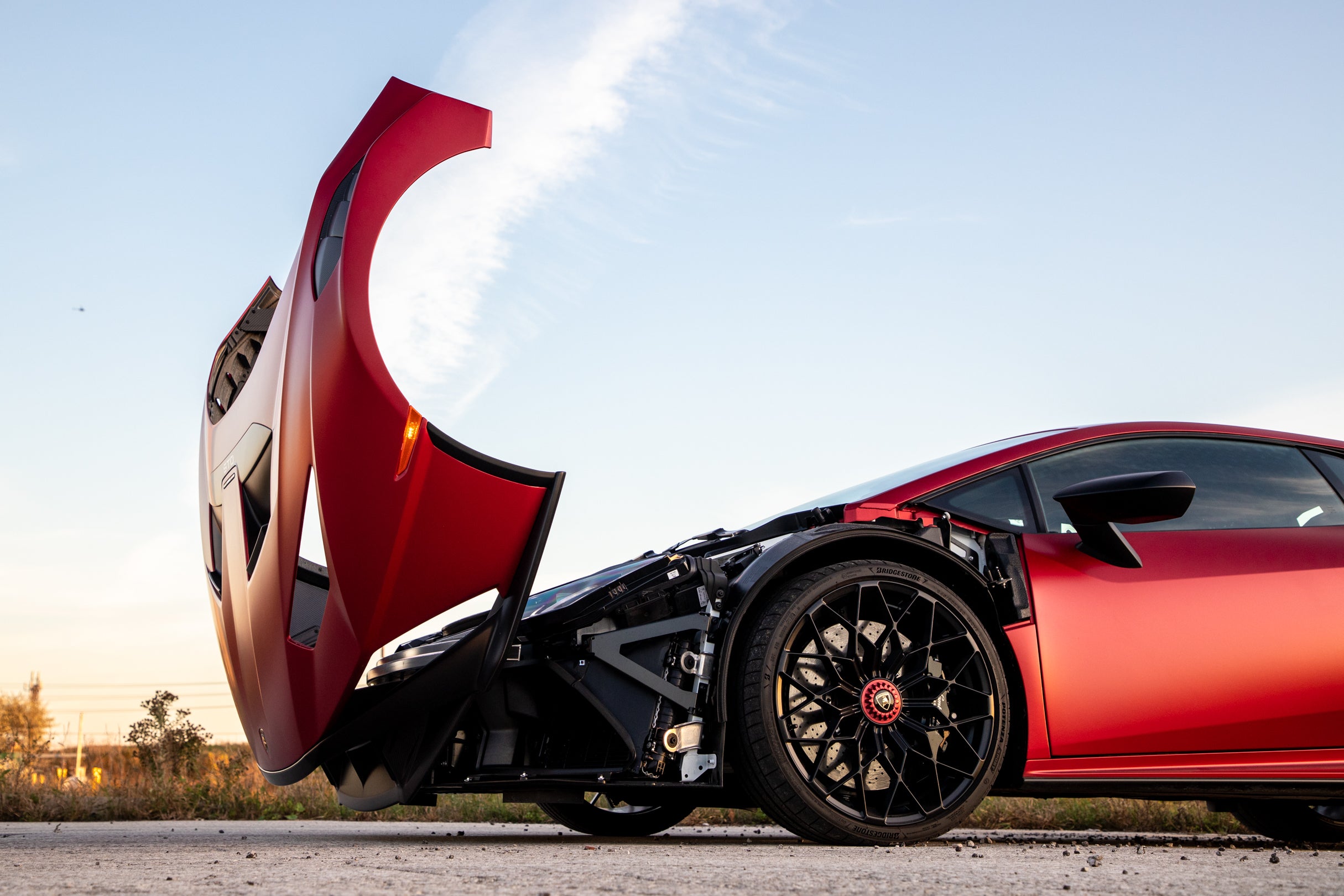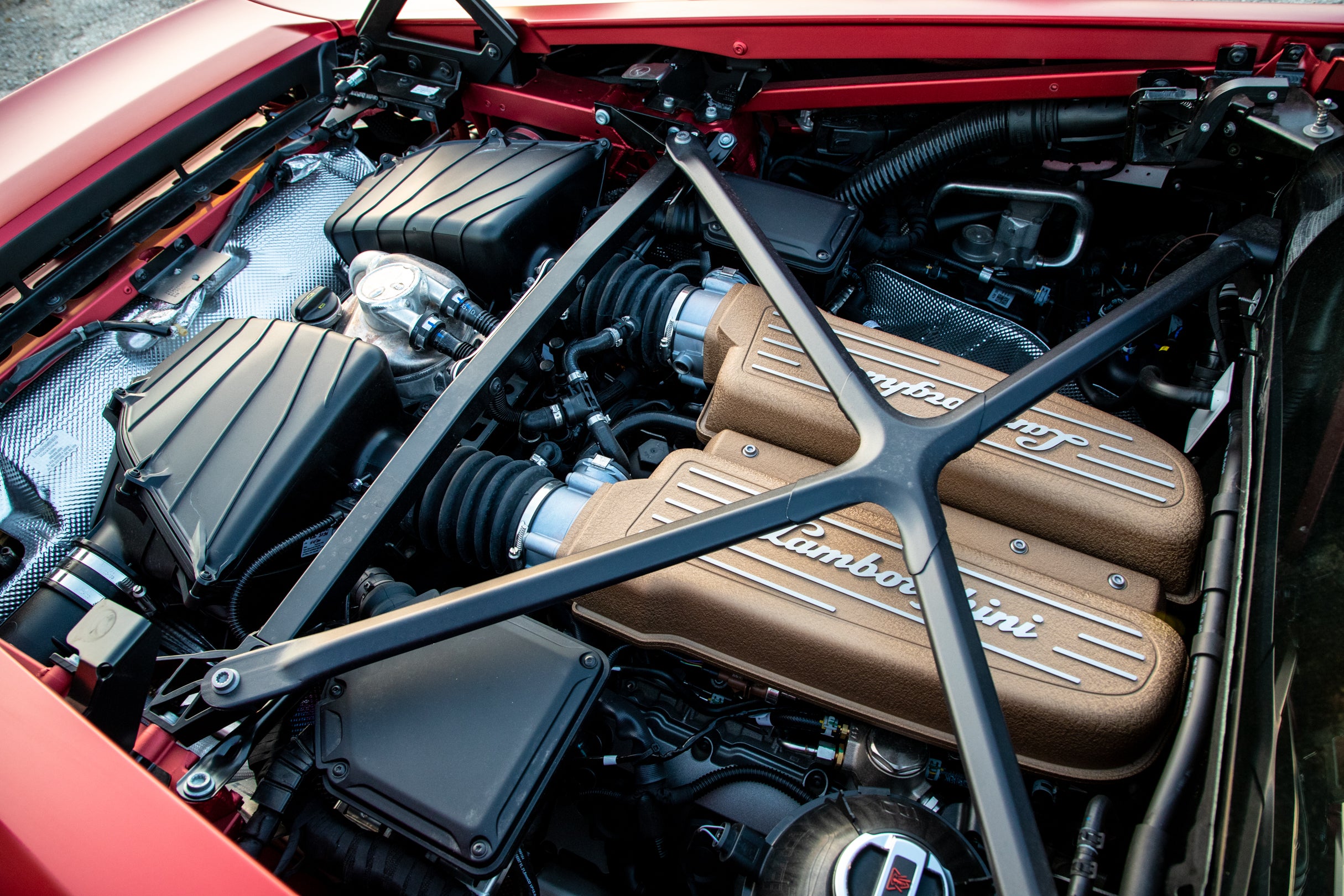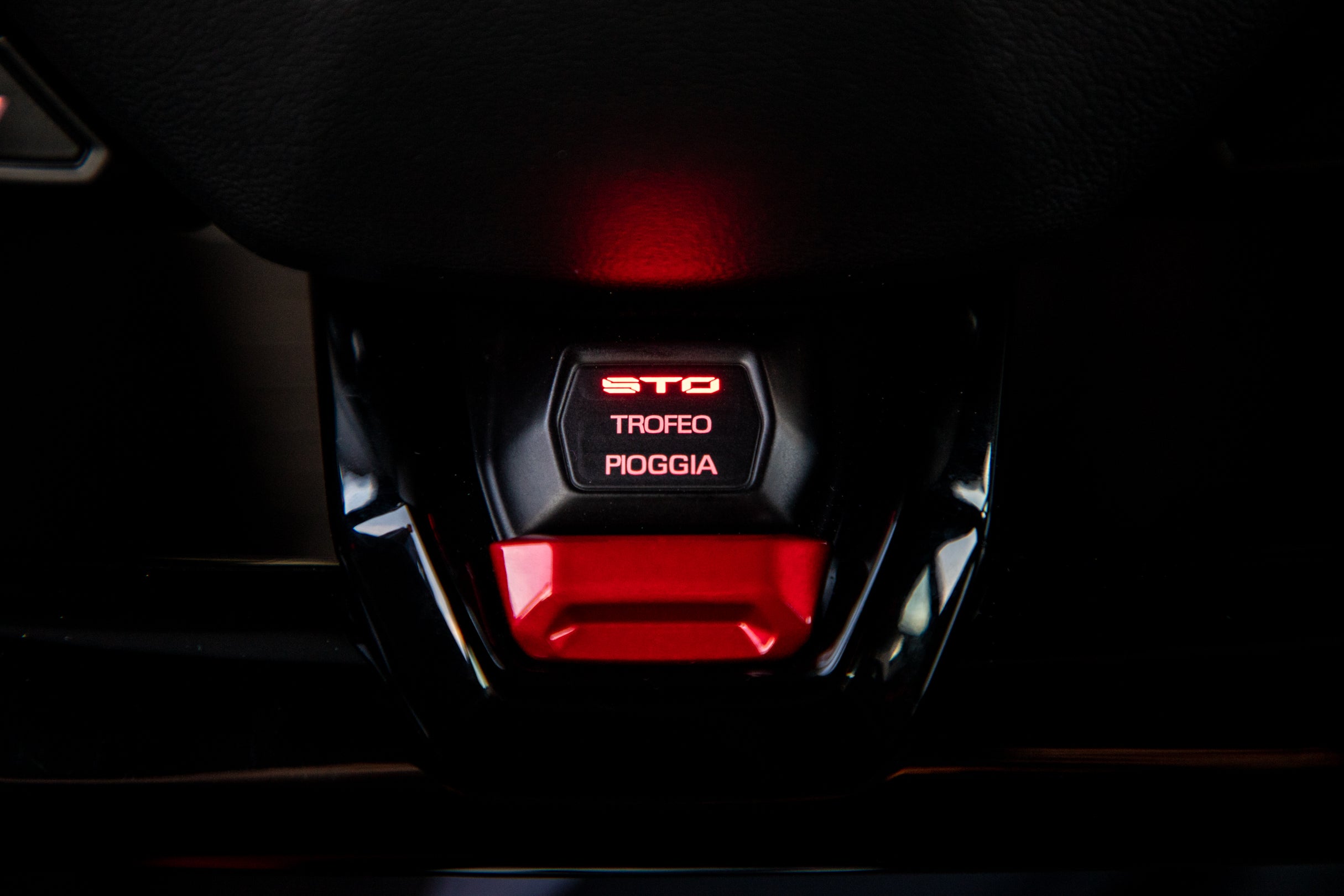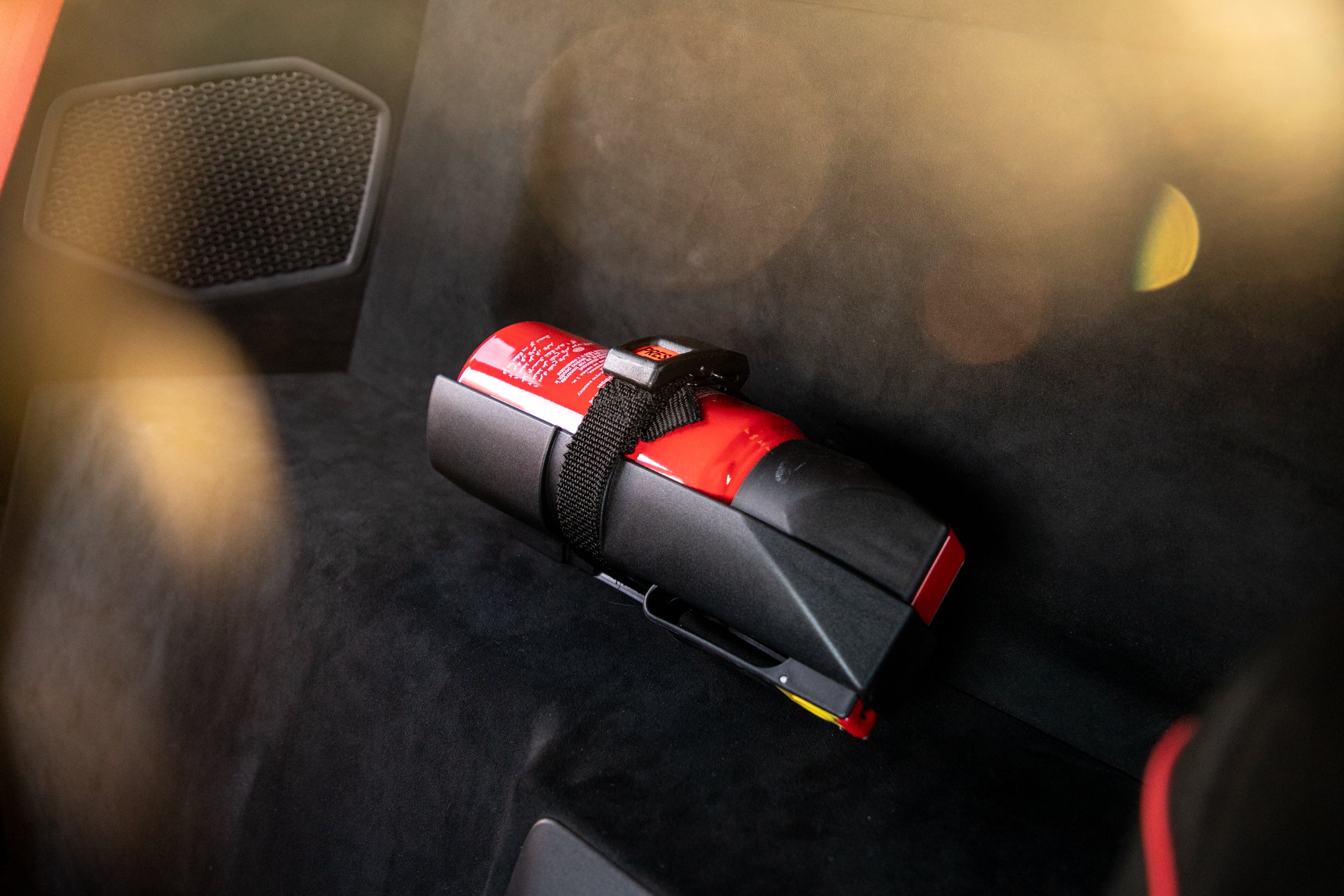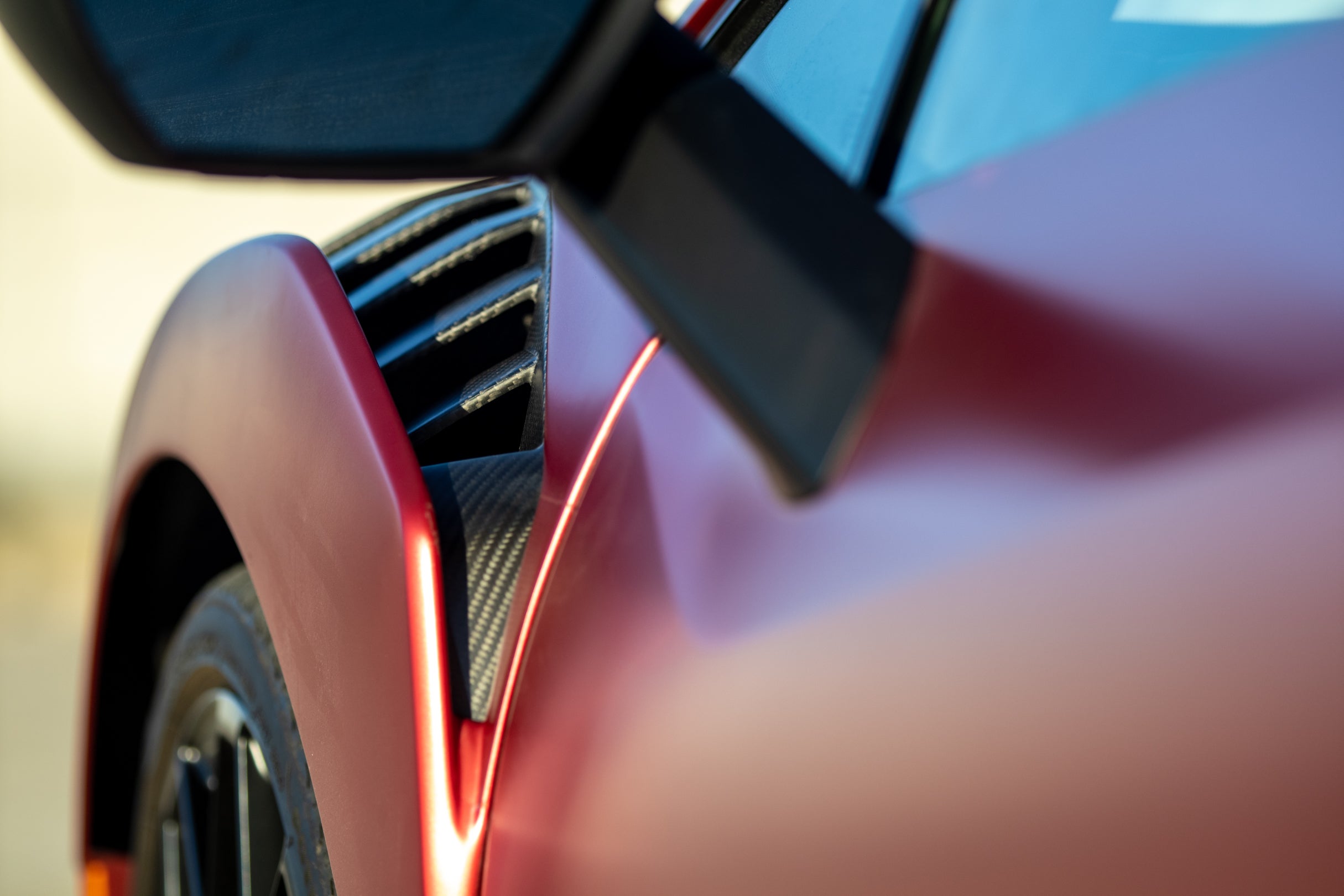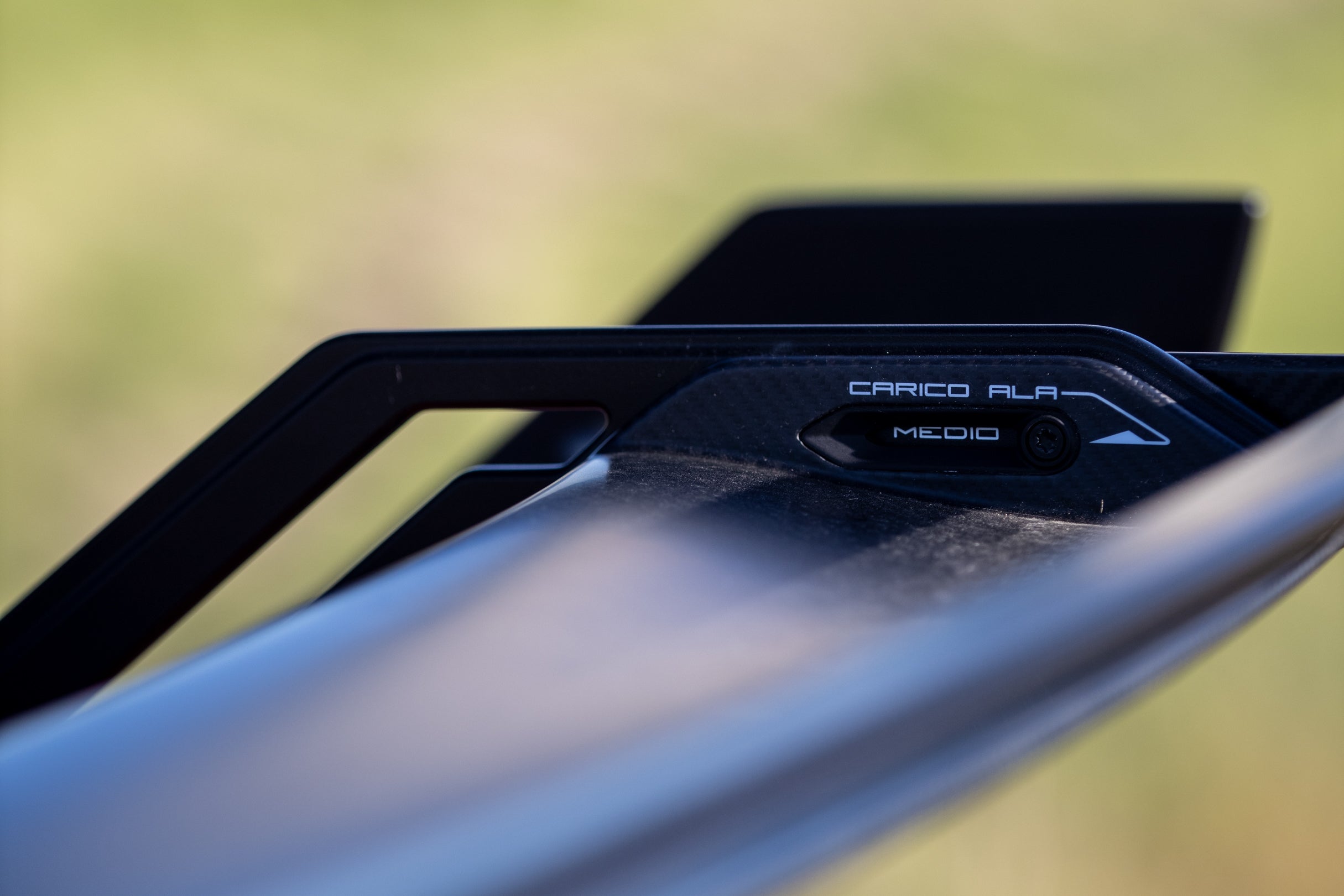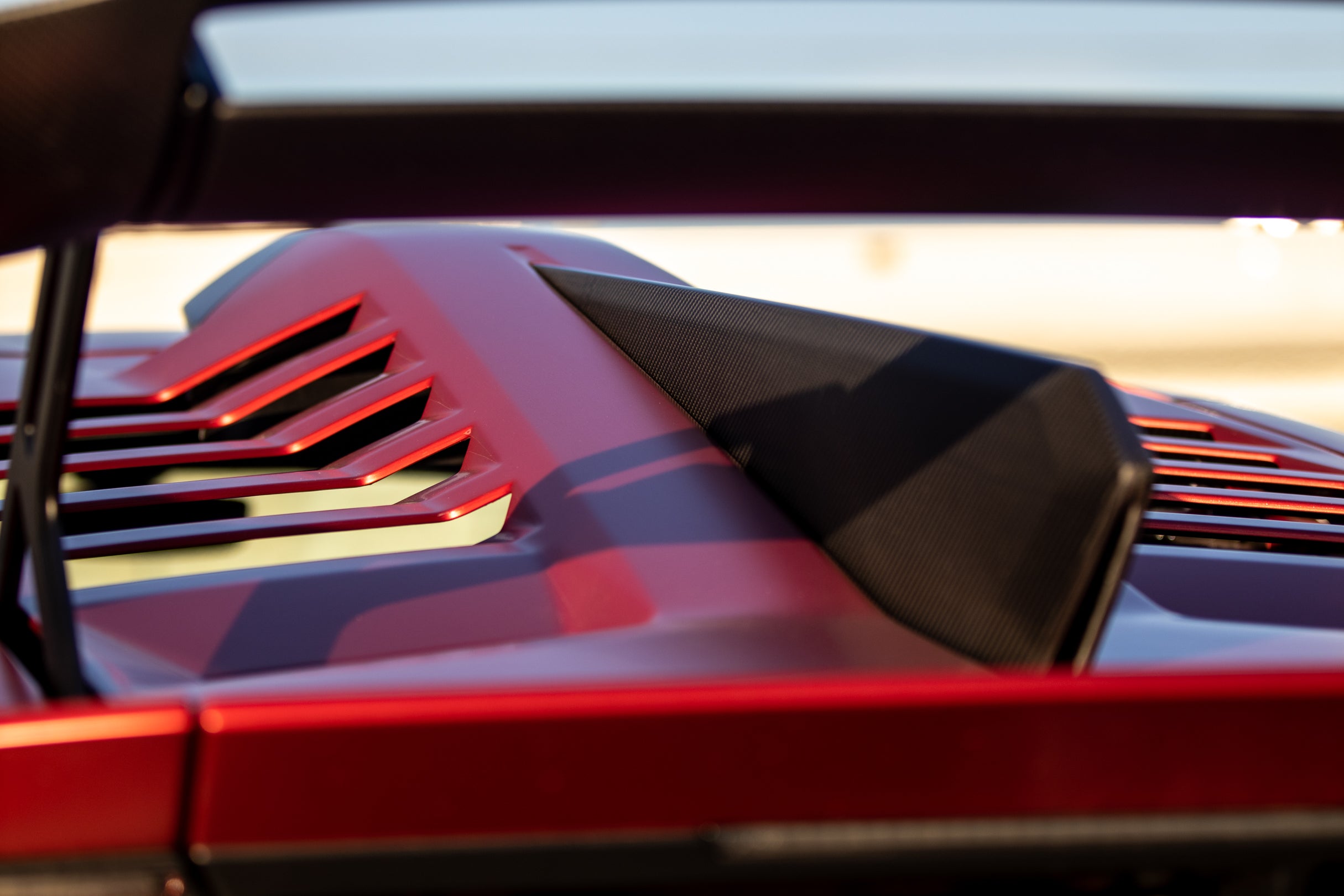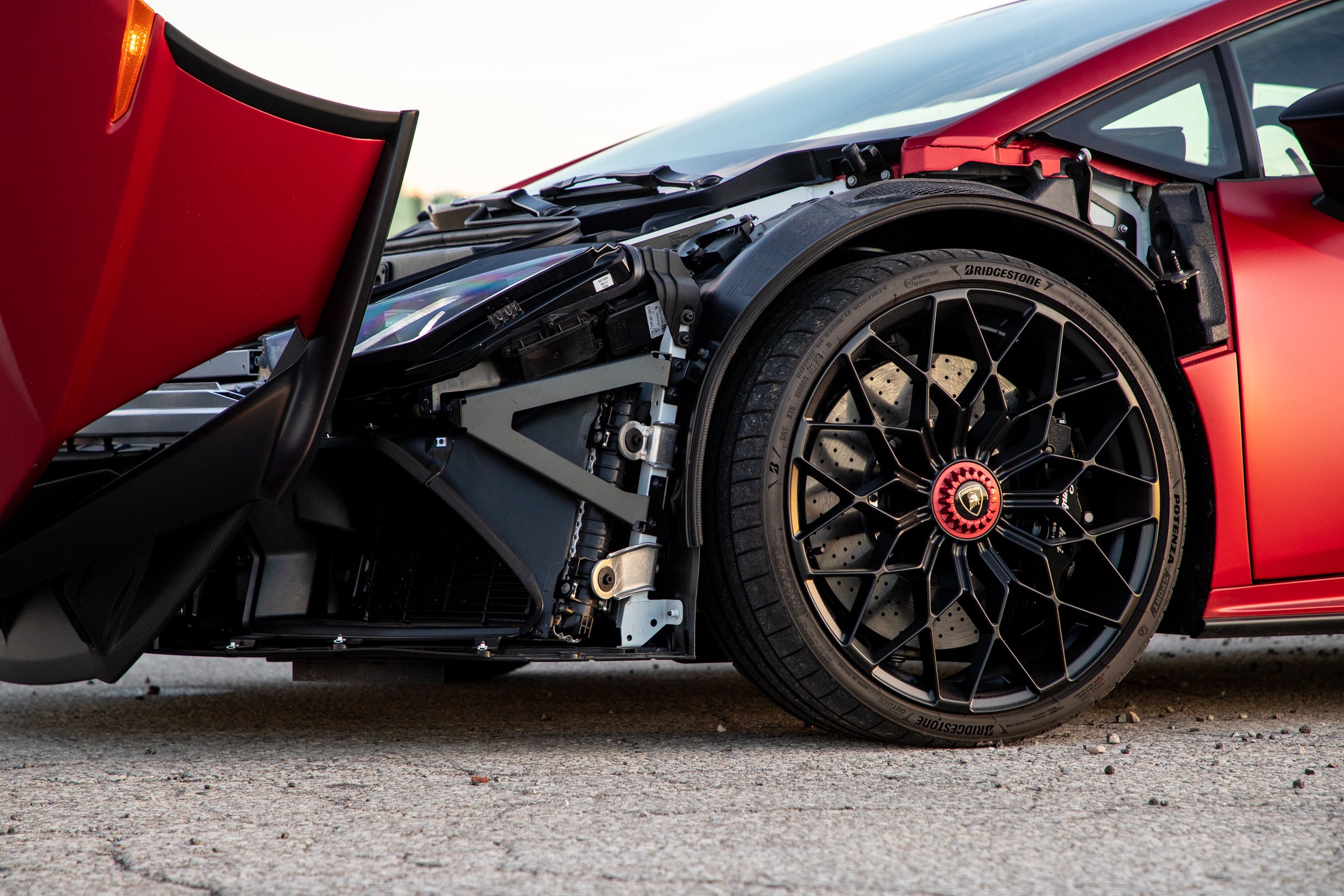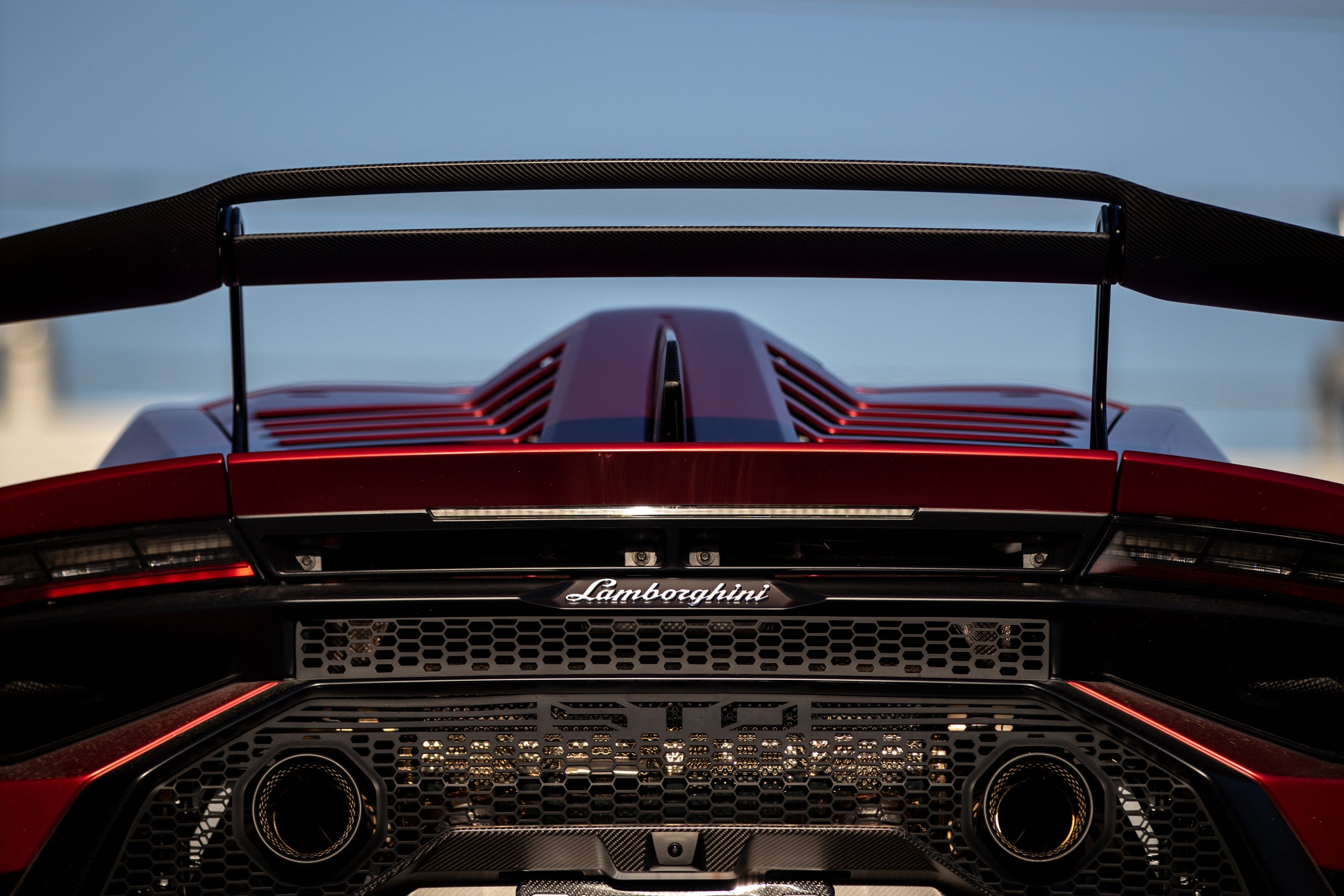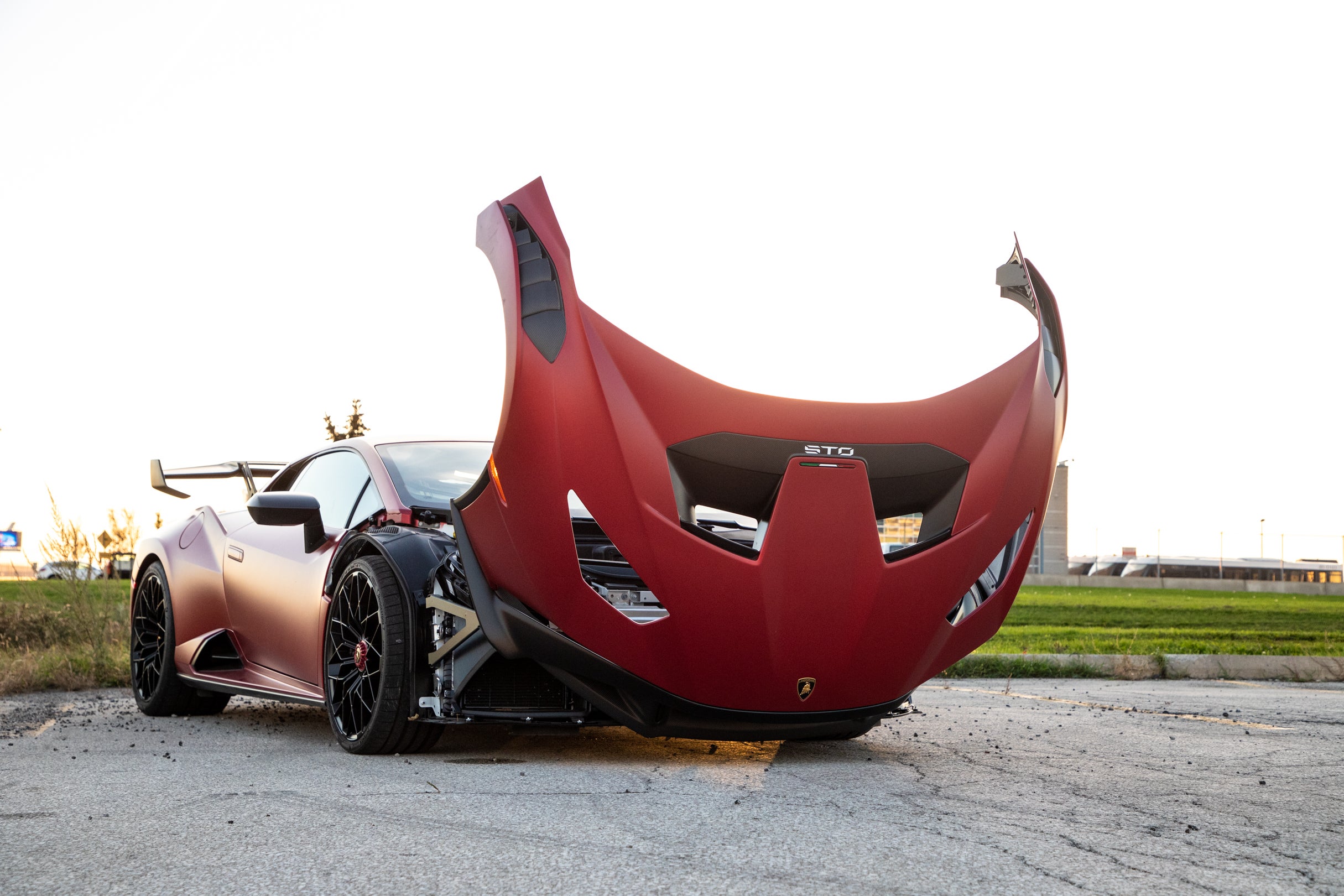In Lamborghini parlance, STO stands for "Super Trofeo Omologato" and denotes a homologation effort derived from the supercar maker's one-make Super Trofeo racing series. But after having sampled the 2021 Lamborghini Huracán STO on the road, those three letters may as well be a slightly insidious code for "steroids" because this car takes everything amazing and terrible about the rear-drive Huracán Evo and cranks all of it up to 12.
Actually, scratch that. The car turns things all the way up to 631.
*All prices in Canadian dollars unless otherwise noted.
Being the closest thing (so far) to a Huracán GT3 Evo racer you can register for and drive on the street, the Lamborghini Huracán STO is powered by the same 5.2-liter, naturally aspirated V10 that Lambo's "entry-level" supercars have used since the facelifted Gallardo entered the fray in 2008. Here, however, it makes 631 horsepower—21 more than the Evo and matching the Performante, which is Lamborghini's previous stab at a 'roided up Huracán. The Performante happened to be the quickest production car to ever lap the Nürburgring Nordschleife at the time, besting the Porsche 918 Spyder hybrid hypercar by a whole five seconds.
The rest of the STO is even more uncompromising still, featuring wings, vents, and modified body pieces galore that all contribute to 53 percent more downforce than the Performante and overall airflow that's 37 percent more efficient. It's almost 95 pounds lighter than the Perf, too, thanks to a body that's 75 percent carbon fiber, a windshield that's 20 percent lighter, and magnesium wheels. For those with a phobia towards numbers, all you have to know is that STO trumps that 'Ring record-breaking Lambo when it comes to lightness and rawness. The tracks were widened, suspension bushings stiffened, new anti-roll bars installed, and the noise coming out of that V10 has been made even sharper at high revs. Oh, and unlike the all-wheel-drive Performante, the STO is rear-drive only.
Aesthetically, the STO's enhancements mean it's far from the most classically beautiful Huracán. The blacked-out lower sections on this tester are SUV-esque and the upward-pointing fender fins definitely lean more function than form. But this is a Lamborghini, after all, and its shape alone commands attention like little else. Y'know how Porsches are lauded for offering exotic car performance without attracting exotic car attention? Yeah, this absolutely does not apply here. People point. People stare. People take pictures. And if you're ever stopped anywhere for more than a few minutes, prepare to answer questions and make some new friends.
Adapting a race car for the street often makes for a terrible road car for doing actual road car things. In the case of the Super Trofeo-derived Huracán, that... remains pretty much true. For starters, the dead pedal is positioned too far inboard. Vertically integrated Apple CarPlay runs fine but the stock infotainment software looks and feels like the sort of free mobile app whose true function is to give your phone a virus. The stereo may be the worst one I've heard in any modern car and even after getting "used to" it, I'm still not a fan of Lambo's stalkless, steering wheel switch-based turn signal and wiper controls.
And because I feel morally obligated to point this out in any car that still has not gotten the memo about volume knobs being essential, the Huracán does not have a volume knob or indeed any physical volume controls, relegating that exclusively within the touchscreen. Maddening.
Storage space is unsurprisingly abysmal. There are no cupholders, there's no glove box, and because of the STO's race car aero-derived front end, the frunk—if you can even call it that—is really only big enough for a single helmet and nothing more. Opening that clamshell up requires a special key. (Ditto for the shark-finned engine cover, the removal of which is a two-person job.) Full-carbon sport seats are nicely sculpted and bolstered but hard, resulting in a sore back after a solid day of driving.
Around town, the hardcore Huracán's driving inputs aren't quite as sensitive, intimidating, or unwieldy as its premise may suggest, but almost everything else surrounding that drive has clearly been calibrated with performance in mind. The steering is relatively light and easy but the ride is appropriately stiff and communicative over rough pavement. (It is, however, oddly good at cushioning against parking lot speed bumps. Almost as if Lambo knows that every car it makes, no matter how aggro, must survive being manhandled by Ritz-Carlton valets.) Clearly geared for trackwork, the seven-speed automatic transmission keeps the engine revving quite high on the highway. Like, "approaching 3,000 rpm going 70 mph in seventh gear" high.
Terrible rearward visibility, no blindspot monitoring, and the extra mental real estate it takes to remind yourself of this car's unconventional turn signal switch (not to mention the fact that absolutely everybody is watching you and that this car costs as much as the average Canadian earns over nine years) mean lane changes can truly be nerve-wracking.
Driving the Huracán STO around town to run errands, then, is a bit like wearing scuba gear on a simple fishing trip. You could do it, I guess, but it's overkill, mostly uncomfortable, and there aren't nearly enough pockets.
But after driving this car as intended, I no longer cared about the ridiculous frunk or the shoddy speakers or the weird controls or not being able to see behind myself. Because as a capital-D driver's car, the Lamborghini Huracán STO is as raucously wonderful as you expect and I hoped it would be. Much like how its exterior design is the aspirational reference point for every wildly styled hot hatch, the way the STO drives is what every sporty car that exists seeks to emulate.
The steering is impeccably direct, precise, and feels light in a way that brings to mind an ultra-expensive piece of carbon fiber. The brakes and brake pedal—track-ready Brembo carbon ceramics—are reassuringly solid and super short-travel. That fuel-sapping gearbox shifts ultra-quick—switching cogs with a thespian jolt to the back of the head in Trofeo mode—and is controlled by a pair of massive and massively badass alloy paddles behind the steering wheel.
Those perfectly sculpted paddles provide control over what is—despite the extensive handling and aero enhancements—this car's pièce de résistance: that glorious V10. Because of its natural aspiration, the Huracán isn't actually that quick or loud at low revs. But as the digital, race car-style tach crosses past 4,500 rpm, it's as if a switch is flicked somewhere deep within the 10 cylinders and the merely menacing purr becomes a full-on racing tiger roar, violently blasting you towards the next corner. It's high-pitched, visceral, absurdly exciting, and sounds like God himself is yelling at you in some otherwordly, extra spicy dialect of Italian. The ridiculously loud pops and bangs—cracks, really—that appear in Trofeo mode sound like full-fat butter to the pale margarine that is the synthesized mewling from countless BMWs, hotted-up Golfs, and enthusiast Hyundais.
Because this car's aerodynamic additions have been designed to produce downforce, streamline airflow, and not do much else, wind noise is significant and contributes to an almost turbo-like whoosh that gets louder with acceleration. The STO fittingly doesn't give a fuck about NVH and, when you're caning it and fantasizing about your alternate-reality career as a racing driver, it's all the better for it.
I wish I had the opportunity and the stones to have pushed this car hard enough to be able to tell you anything noteworthy about how its chassis behaves at the limit and all of that good stuff. But the fact of the matter is that the STO's limits are so obscenely high that anybody who claims to have gleaned that sort of insight after just a street drive is either talking out of their ass or really ought to have their license revoked. Thankfully, however, my selfless leader and editor-in-chief Kyle Cheromcha got to fling this car around Willow Springs Raceway and happened to write down some thoughts about that whole ordeal. Review on that to come. On public roads, though, the pumped-up Huracán does what you want and goes—instantly, thrillingly, and enthusiastically.
That said, so will much of its competition, which consists of harder variants of entry-level supercars such as the McLaren 600LT and, until Maranello race-ifies the F8, the Ferrari 488 Pista. The new Porsche 911 GT3 would also likely be on the STO's hitlist. However, the Huracán STO likely exists in a tax bracket in which, I suspect, customers aren't exactly cross-shopping cars like these in the traditional, poor-person sense by buying just one. They're buying 'em all.
The Lamborghini Huracán STO starts at $394,217 CAD but the car tested here was optioned with $19,320 matte red paint, a $10,060 dark chrome and carbon twill package, $5,410 carbon fiber floor "mats," $20,870 worth of matte exterior carbon fiber, the $8,510 sport seats, a front lift system that costs $4,640, a $930 fire extinguisher, and almost $14,000 of other, mostly cosmetic upgrades. As-tested, then, the red Lambo you see here cost $477,647 CAD (or approximately $375,376 USD). This is, if you somehow haven't already gathered, An Expensive Machine.
But when its very well-to-do owner walks past their Porsches and Ferraris, however, and opts to take the Huracán STO out, they'll be in for an immensely good day. The STO rips. Feeling and hearing it sing and surge to 8,500 rpm is about as ridiculously pleasurable as you think it is. However, as a method of transportation, it's also as big of a pain as you think it is. Lamborghini has done a decent job of adapting its racing machine for reasonable road use, as the Omologato Huracán's driving inputs remain quite docile, but there's no getting around the unfettered wind noise, stiff seats, or non-existent rearward view. Once you arrive at your favorite backroad and let the STO stretch its legs, though, it'll all be worth it, I promise.
Got a tip or question for the author about the Huracán STO? You can reach him here: [email protected].
